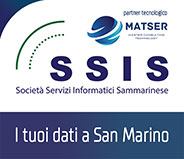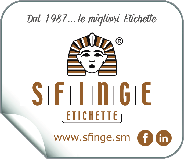First point: we need to clear the field of any wrong ideas and old clichés. What is San Marino? What does it want to become? Where is it going? These are by no means obvious questions and we need to answer them as soon as possible.
SAN MARINO – First point: we need to clear the field of any wrong ideas and old clichés. What is San Marino? What does it want to become? Where is it going? These are by no means obvious questions and we need to answer them as soon as possible.
Second point: who is asking or should be asking these questions?
Let’s start with the second point because, if we consider it carefully, it is the main issue. The first who should ponder the line San Marino is following are its citizens. The political world – the management benches, professional categories and trade unions – but also entrepreneurs who base their work on how San Marino is perceived overseas and obviously, individual citizens. The perception is that the country has yet to fully understand the importance of current events (the crisis, but not only) and therefore, there continues to be tangible resistance to change, more so than could be considered normal. The solution could be to introduce vocational training initiatives for the population, aimed primarily at young people and the newer generations, in order to create management benches with international respite.
If the people of San Marino themselves find it difficult to understand the position of the republic, imagine what is happening overseas. One of the priorities that San Marino has to set itself is to work towards improving how it is perceived in Italy and the rest of the world.
At the beginning, we wondered what San Marino was. San Marino is a free and independent state with a thousand-year history, a strong democracy and a key strategic position in the heart of Italy. It is also a microscopic reality within a network of political, social and cultural exchanges, with all the limits that this implies, as well as all the opportunities it offers.
San Marino has a real economy, which is currently undergoing a radical change. It has a recent past – an almost-present, we could say – that has somewhat tarnished its image, with serious repercussions on its GDP. Acknowledgement by the political classes of San Marino that past choices (the old theory of “camouflage”) were objectively no longer acceptable was an initial and extremely important step. The next is to implement a regulatory process aimed at transparency. So, have we he hit the bull’s-eye? Well, not yet. Certain processes require time. We could say these are cultural rather than legislative changes, but the process has begun. We are on the right path and this is an important signal.
Here’s what we have today; a small state, in the centre of Italy and – symbolically – on the border of the European Union, with a great historical heritage and a small (in numerical terms) heritage of human resources to invest in. This is a country with numerous peculiarities that can and must be developed in the economic field; light taxation, the possibility to greatly limit bureaucracy and build a direct relationship with those who govern the country’s strategic choices, efficient services and increasing transparency. Today, thanks to the forum, the Republic of San Marino is clearly stating where it wants to go. It wants to join the road towards internationalization, becoming a service hub for those who want to invest and a junction between old Europe and the enormous potential of the Far East; like a communicating door between emergent economies and the West that represents both the past and the present of the world economy.
Loris Pironi



